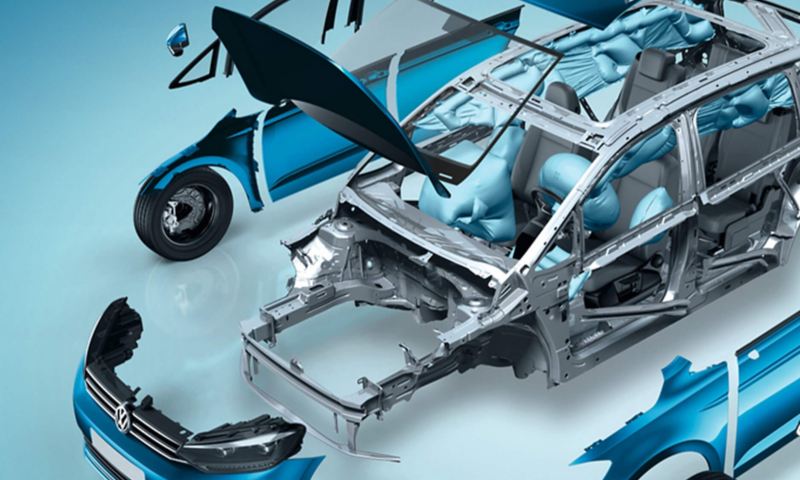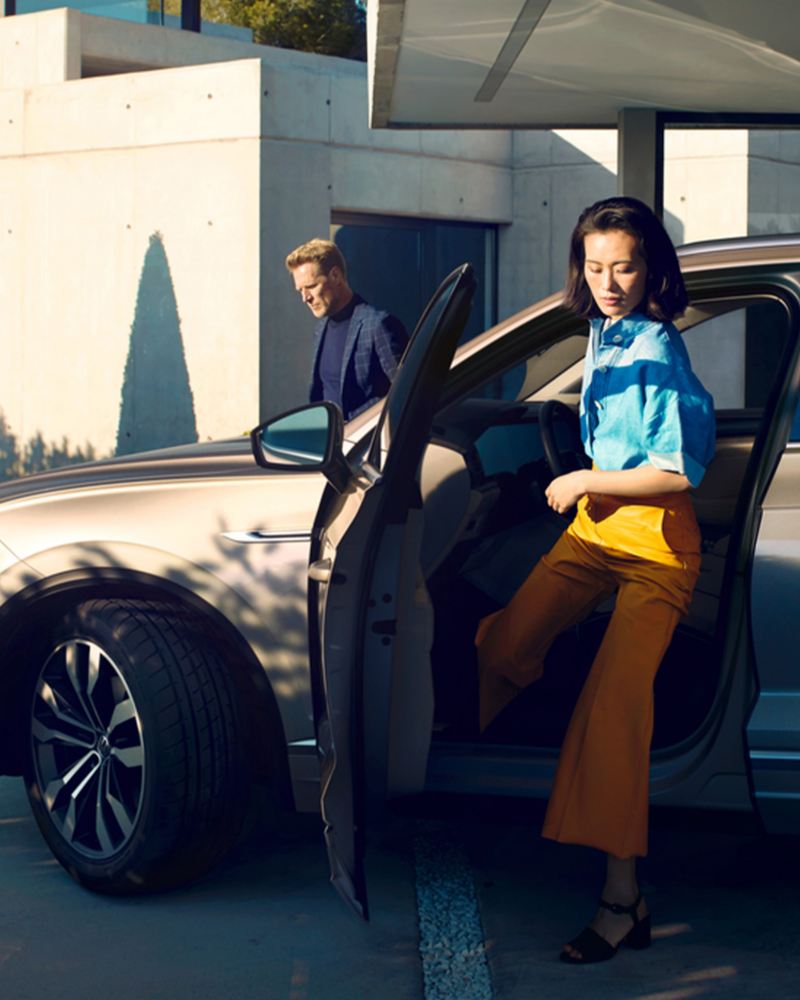Crumple Zones
Designed to absorb the impact of a crash and protect occupants
Crumple zones are part of the tough safety shell of our cars, helping to protect you and your passengers in the event of an accident. Our cars are designed and engineered with a range of safety features1 to help protect you and your passengers in any eventuality.
All our cars are built with a tough safety shell. We 'test-drive' our designs through accurate, computer-simulated accidents to make sure the safety shell stays intact when you need it to.
To further enhance your safety, we include crumple zones at the front and rear of the shell. Crumple zones are designed to absorb impact energy during a collision so that most of the energy is dissipated across these zones, and not in your passenger compartment. The strong outer shell comes with front and rear crumple zones that help to absorb the impact of a crash, increasing the safety of occupants.
Occupant cell
The occupant cell is the space in your car containing the driver and passengers. It forms a rigid safety cage and in contrast to the crumple zones of the car body, it is not easily deformed. It is designed to protect the survival space of occupants in accidents up to a certain severity of impact. We use measures such as crash tests to continually improve the safety of our occupant cells.
Foot protection
In the event of an accident, the driver's feet and lower legs can be at risk of injury, depending on the type and severity of the collision. In order to reduce that risk we make carefully calculated use of deformation elements for the pedals and foot rest. The deformation of the front bulkhead in the Euro NCAP offset crash test, for example, leads to deliberate free movement of the pedals above a defined force level. This disconnects the pedals from the intrusion, so they remain mobile and exercise very little force, reducing the risk of foot and lower leg injuries.
Roll-over bar system
Our active roll-over protection system is situated behind the rear head restraints. It works with the reinforced windscreen frame to provide extra crash protection for all the occupants. At the heart of the system are sensors that constantly monitor the car's progress. Should they detect the risk of a rollover or impact, a dual-lever release system automatically turns the rear head restraints into a pair of robust rollover bars. These bars are housed in special cassettes bolted to the luggage compartment wall behind the rear seats. Once activated, they shoot upwards and are securely locked into place within 250 milliseconds.
Deformation zones
Impact absorption or deformation zones are designed to help protect you and your passengers in the event of an accident. We include impact absorption or deformation zones at the front and rear of the body shell. They are designed to absorb impact energy during a crash so that most of the energy is dissipated across these zones, and not in your passenger compartment. They do this by collapsing in a controlled fashion. We design our cars so the engine and boot function as rugged, but ultimately deformable, impact absorption or deformation zones.

